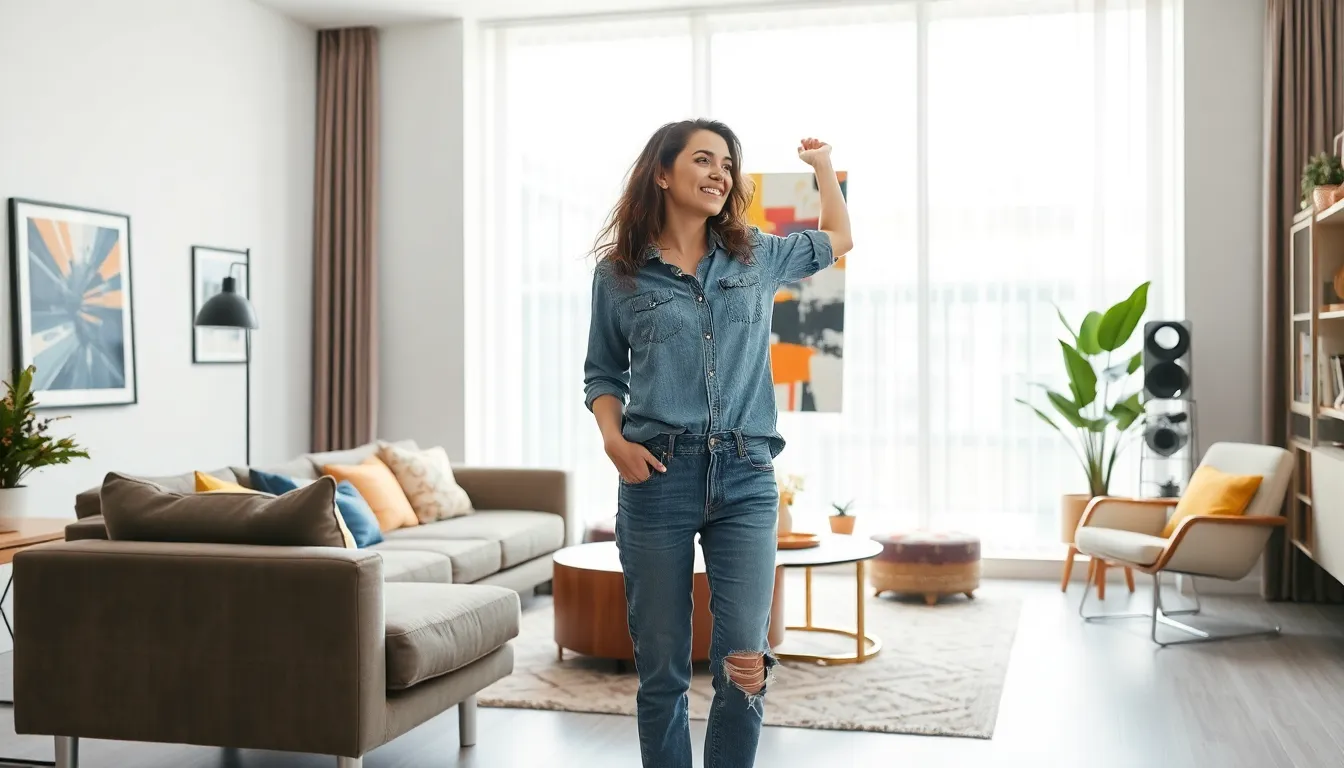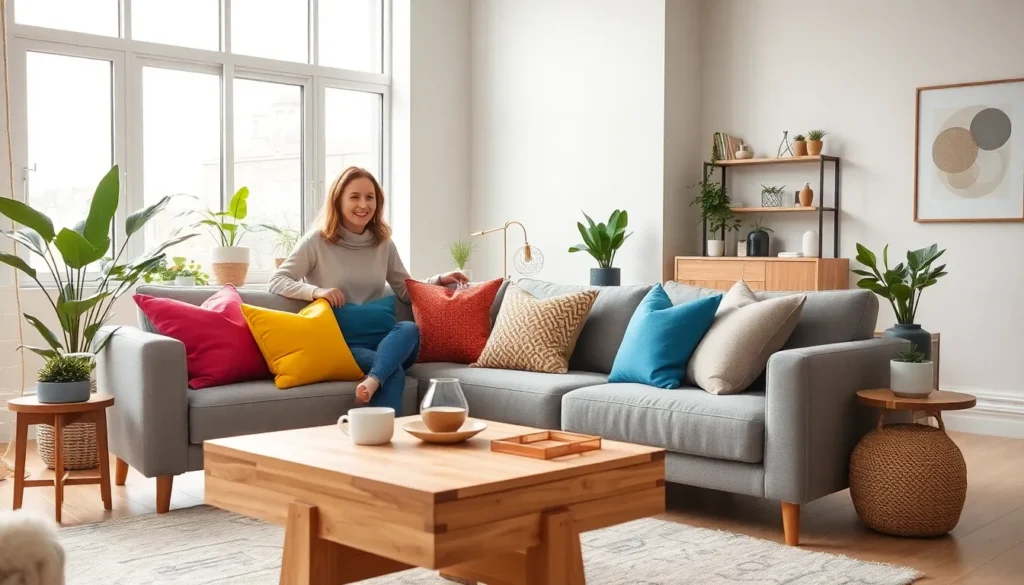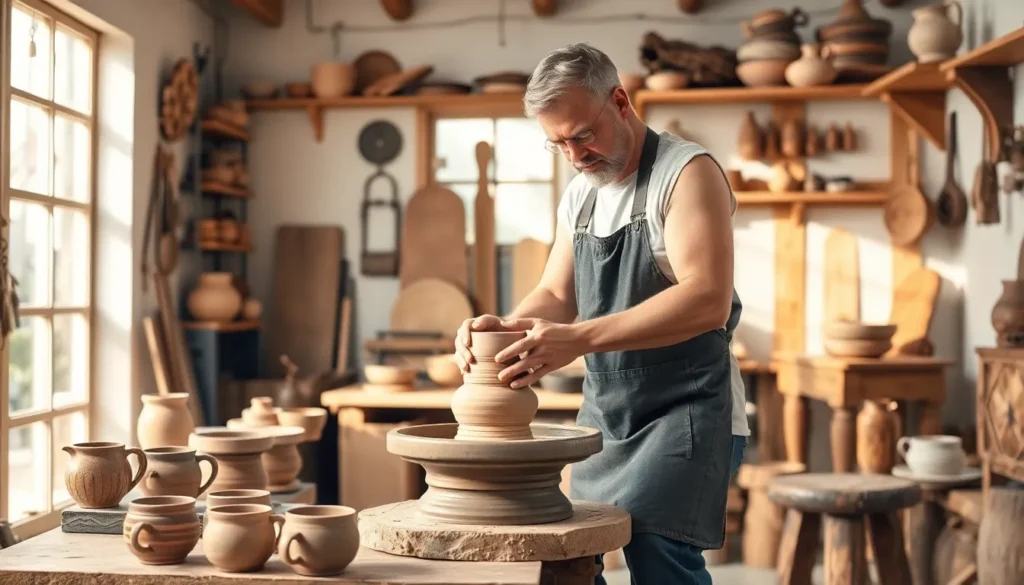Home is where the heart is, but let’s be honest—it’s also where the clutter is, and that mismatched couch isn’t doing anyone any favors. Home design concepts can transform a chaotic space into a sanctuary that reflects personality and style. Whether it’s a cozy nook for curling up with a good book or a vibrant living area that sparks joy, the right design can make all the difference.
Table of Contents
ToggleOverview Of Home Design Concepts
Home design concepts focus on creating functional and aesthetically pleasing environments. Several key principles guide these concepts, such as balance, proportion, and harmony. A balanced space distributes visual weight evenly, while proportion involves the relationship between various elements. Harmony ensures all elements work together cohesively.
Different styles influence home design. Contemporary, traditional, and minimalist styles each emphasize unique characteristics. Contemporary design embraces clean lines and open spaces, while traditional design emphasizes comfort and rich details. Minimalist design, on the other hand, prioritizes simplicity and functionality.
Color plays a vital role in home design. Selecting a color palette can dramatically affect mood and ambiance. Warm colors like reds and yellows evoke energy, while cool colors such as blues and greens promote calmness. Using neutral colors can create a versatile background for various furnishings.
Furniture selection contributes significantly to home functionality. Choosing multi-functional pieces can maximize space utilization in smaller areas. Storage solutions like ottomans and benches help maintain organization while offering additional seating. Custom furniture allows individuals to tailor solutions to their specific needs.
Additional elements, such as lighting and texture, enhance the overall design. Quality lighting can change how a space feels and serves as a critical design element. Textures from various materials like wood, metal, and fabric add depth and interest, elevating the aesthetic.
Home design concepts encompass a variety of practices that transform personal spaces into coherent settings that reflect individual preferences. Engaging with these concepts fosters environments that promote comfort, creativity, and function.
Popular Home Design Styles

Home design styles significantly influence the overall aesthetic and functionality of a space. Each approach offers unique characteristics that cater to various tastes and preferences.
Modern Design
Modern design emphasizes simplicity and clean lines. This style incorporates minimalistic furniture and an open floor plan. Neutral colors, such as gray and white, create a soothing backdrop. Large windows invite natural light, enhancing the spacious feel. Materials like glass and metal contribute to an updated look. Artwork often reflects abstract forms, adding visual interest without overwhelming the space. Layered textures create depth, ensuring the environment remains engaging.
Traditional Design
Traditional design showcases elegance and timeless elements. Rich wood tones and classic furnishings define this style. Tapestry and floral patterns often appear in upholstery and drapes. Colors tend to be warm and inviting, promoting comfort throughout the home. Structured layouts and symmetrical arrangements evoke a sense of order. Personal touches, such as family heirlooms, enhance the overall character. A focus on craftsmanship highlights attention to detail in every aspect of the design.
Eclectic Design
Eclectic design celebrates diversity and creativity, blending various styles into a cohesive look. It encourages mixing different colors, patterns, and textures without rigid rules. Vintage furniture and contemporary pieces coexist harmoniously. Unique decor items reflect personal interests and travels, enhancing the space’s storytelling potential. Custom artwork often becomes a focal point, showcasing individual taste. This style thrives on contrast, ensuring that no two eclectic spaces look alike. The result is a vibrant and inviting environment that feels distinctly personal.
Key Elements Of Home Design
Home design incorporates various elements that work together to create functional and visually appealing spaces. Understanding these key components enhances the overall ambiance and comfort of a home.
Color Schemes
Selecting the right color scheme significantly influences a room’s atmosphere. Warm colors, such as reds and yellows, energize a space, making it feel vibrant. Cool colors, including blues and greens, promote tranquility and relaxation. Neutral tones serve as a strong backdrop that allows bold accents to stand out. Combining colors in an intentional way creates harmony. For example, pairing soft hues with brighter shades can lead to a balanced and inviting environment.
Furniture Layout
Arranging furniture effectively maximizes space and enhances functionality. Traffic flow remains essential, ensuring easy movement throughout a room. Grouping seating areas fosters conversation and connection among guests. Multi-functional furniture, such as ottomans with storage, adds versatility to smaller spaces. Using area rugs can define zones within open layouts. Each piece’s scale should complement the room to create visual coherence.
Lighting Considerations
Lighting plays a pivotal role in home design by affecting mood and functionality. Natural light, when harnessed, brings warmth and invites energy into a space. Layering different lighting sources, including ambient, task, and accent lighting, promotes versatility. Dimmers allow for adjustable brightness, catering to various activities. Choosing fixtures that reflect personal style adds character while enhancing aesthetics. Quality lighting elevates the overall design and creates inviting environments.
Sustainable Home Design Concepts
Sustainable home design emphasizes environmentally friendly practices and materials, creating spaces that benefit both occupants and the planet. It prioritizes techniques that reduce waste and enhance energy efficiency.
Eco-Friendly Materials
Choosing eco-friendly materials significantly impacts sustainability. Reclaimed wood offers a durable option, reducing the demand for new lumber. Bamboo stands as another popular choice, as it grows quickly and absorbs carbon dioxide. Recycled metals and low-VOC paints contribute to healthier indoor air quality, essential for well-being. Natural stone can also enhance aesthetics while ensuring longevity. Recognizing the importance of sustainable sourcing leads to reduced environmental footprints.
Energy Efficiency
Incorporating energy-efficient solutions fosters long-term savings and minimizes environmental harm. Selecting Energy Star-rated appliances reduces energy consumption and utility costs. Insulating walls, roofs, and floors prevents heat loss, maintaining comfortable indoor temperatures. Installing double-glazed windows significantly enhances thermal performance, blocking noise and reducing heating and cooling needs. Smart home technologies allow for better control of energy use, adjusting lighting and heating for optimal efficiency. Prioritizing energy conservation serves to enhance both the comfort and sustainability of homes.
Home design is more than just aesthetics; it’s about creating spaces that resonate with personal style and enhance daily living. By understanding key concepts like balance, color, and functionality, individuals can transform their homes into true reflections of themselves.
Embracing various design styles allows for unique expressions that cater to diverse tastes. Incorporating sustainable practices not only benefits the environment but also elevates the overall quality of life within a home.
Ultimately, thoughtful design fosters a sense of comfort and creativity, making a home a sanctuary that nurtures well-being and joy.









